Super Easy Refrigerator Pickled Garlic Recipe
If you love pickled garlic’s deep, savory flavor, this probiotic-rich pickled garlic will become your new go-to recipe! Made with peeled garlic, brine from homemade fermented sauerkraut, and a touch of apple cider vinegar, this recipe harnesses the power of heirloom culturing. (you can learn about heirloom culturing in our online course!)
I enjoy using active beneficial microbes from the sauerkraut brine, so I don’t just pickle the garlic. I create a tangy, flavorful fermented garlic that’s packed with gut-healthy probiotics.
This method, similar to refrigerator pickling, enhances the garlic’s natural flavors while adding a burst of live cultures. So it’s more delicious and more nutritious!
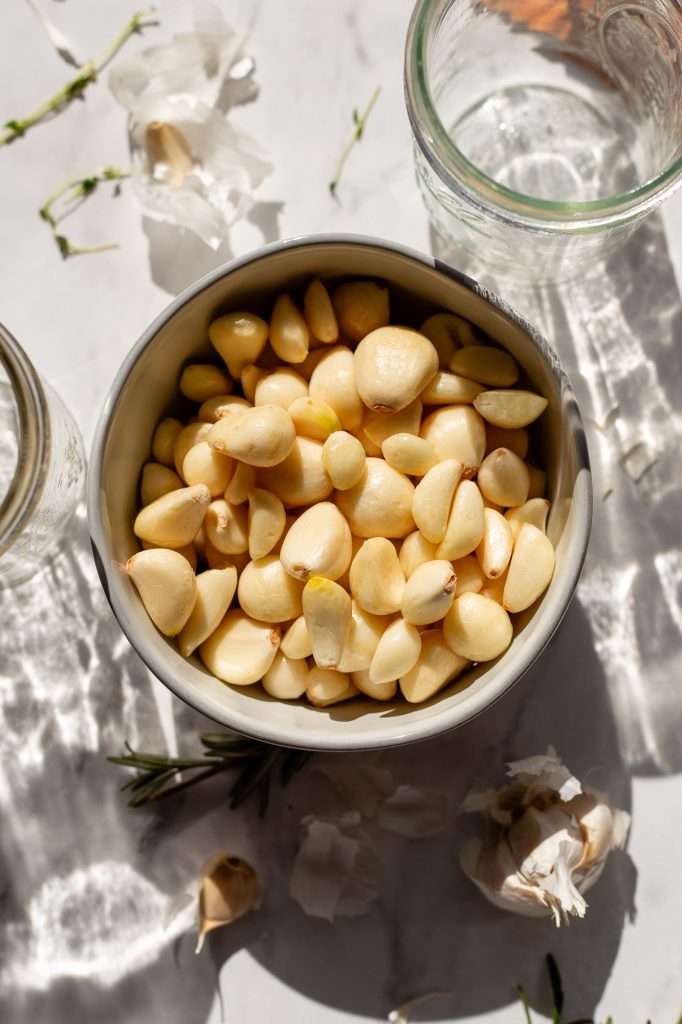
Probiotic Pickled Garlic Ingredients
I always love a recipe with minimal ingredients; this one only has three! Here’s what you need to make my probiotic pickled garlic:
- Peeled garlic: you can buy peeled garlic from the store or peel fresh garlic yourself. I did a mix of both.
- Apple cider vinegar: You can use homemade vinegar or store-bought vinegar. Combining vinegar with fermented vegetable brine creates a wonderfully sour and tangy flavor.
- Fermented sauerkraut brine: Naturally fermented sauerkraut brine works best in this recipe, but fermented pickle or kimchi brine both work great too. My fermented cabbage recipes all result in extra brine for fun projects like this. I love using 100% of what I make at home, and this is probably my favorite way to repurpose sauerkraut brine.
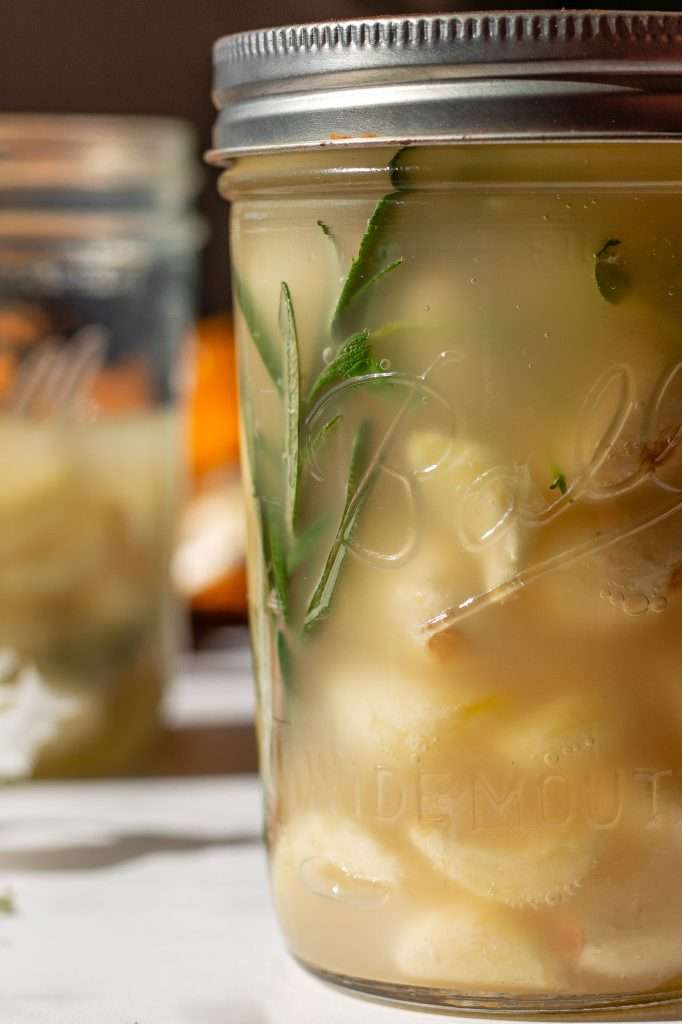
Using Sauerkraut Brine for Pickling Garlic
If you’ve never made sauerkraut before and want to make it before you try my pickled garlic recipe with the best homemade ingredients, I suggest starting with one of these recipes:
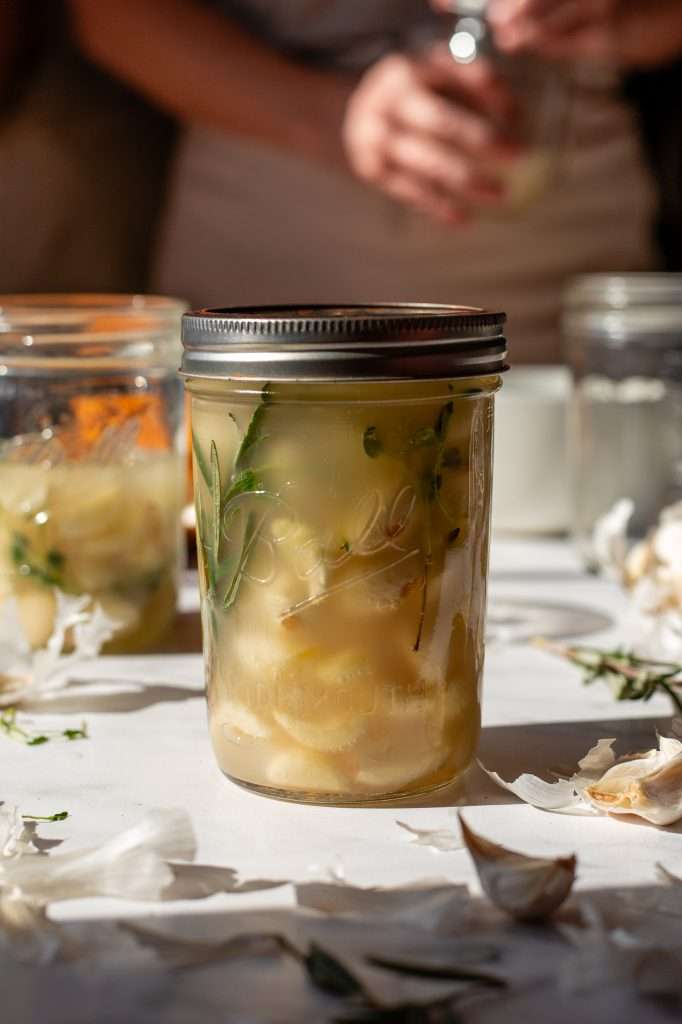
Probiotic Pickled Garlic Important Instructions
- Use wild fermented sauerkraut brine or fermented pickle brine: This ingredient is essential, and you cannot substitute it in this pickled garlic recipe. The brine provides the right balance of acidity and beneficial microbes that help preserve and ferment the garlic properly. If you don’t have any on hand, you can use brine from high-quality, store-bought fermented sauerkraut or pickles. Bubbies is an excellent option for this, as their brine is naturally fermented and rich in live cultures. However, homemade brine is always the best choice, as it’s fresher and contains more active beneficial microbes.
- Refrigeration is necessary: This pickled garlic recipe is not shelf-stable and must be stored in the refrigerator. Keeping it cold ensures the garlic stays fresh and the fermentation process continues at a controlled pace. Be sure to check for any changes in flavor or texture over time, and enjoy it within a reasonable period.
- Be mindful of herbs: While herbs like thyme and rosemary can enhance the flavor of your pickled garlic, it’s important not to overdo it. Using too many herbs can have an unintended effect. Certain compounds in these herbs can combine with those in the garlic, potentially disrupting the fermentation process and even killing the beneficial microbes. For the best results, stick to a moderate amount of herbs to avoid overpowering the garlic or harming the culturing process.
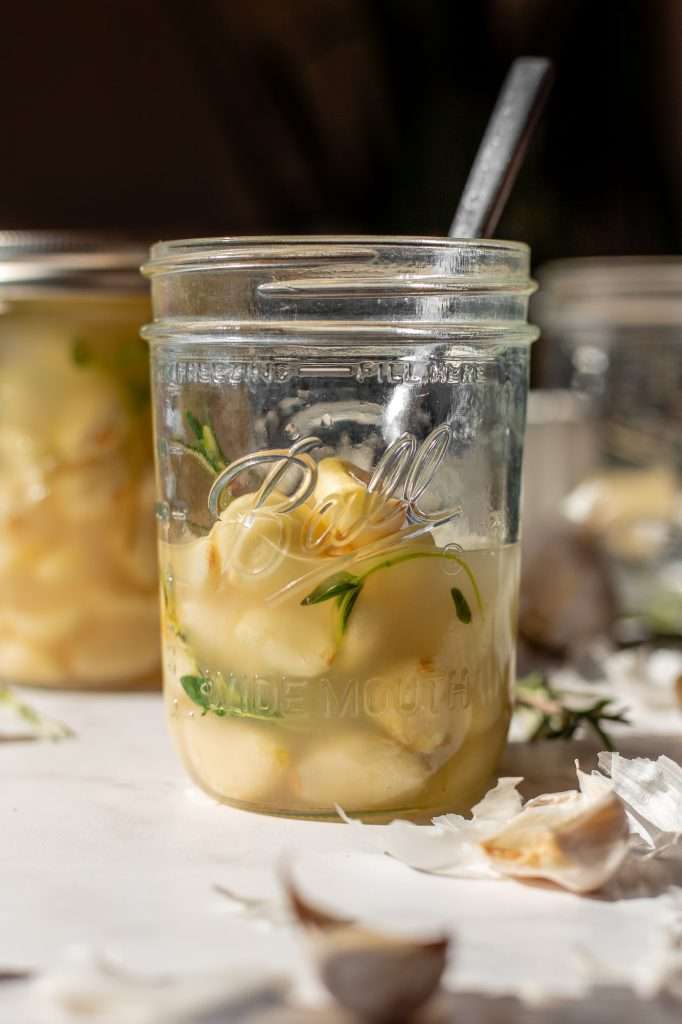
Recipe FAQ
Can you use pre-peeled garlic?
Yes! I suggest ensuring it’s organic and rinsing the garlic well before using it. I used a mix of pre-peeled and freshly peeled garlic when I developed this recipe.
How long will pickled garlic last?
This pickled garlic recipe lasts 6-12 months in the fridge. It probably lasts longer, but it never lasts that long in our house because we eat it all!
Does vinegar destroy allicin in garlic?
Vinegar does not eliminate allicin in garlic but can reduce its potency. Allicin, a sulfur compound formed when garlic is chopped or crushed, is responsible for many of garlic’s health benefits, including antimicrobial, anti-inflammatory, and antioxidant effects.
Pickling garlic in vinegar may lower allicin levels, as the acidic environment can inhibit the enzyme activity needed for its production. However, some allicin may remain.
To maximize allicin content, crush or chop the garlic and let it sit for 10 to 15 minutes before pickling. This waiting period allows allicin to form before vinegar exposure, helping preserve its potency.
What if the garlic turns blue?
When garlic is fermented, sulfur-containing compounds like alliin and alliinase interact with trace amounts of acidic substances, such as vinegar or lactic acid. This can form sulfur-rich pigments, causing the garlic to turn blue, purple, or green.
This color change is entirely safe and natural, indicating no spoilage or issues with the fermentation process. Some garlic varieties, particularly young or freshly harvested bulbs, are likelier due to higher sulfur compound concentrations to show this blue coloring.

Health Benefits FAQ
What are the health benefits of pickled garlic?
- Gut Health Support: The live, active beneficial microbes from the sauerkraut brine act as probiotics, promoting a healthy balance of gut bacteria. Regular consumption of probiotics can help improve digestion, support immune function, and maintain a healthy gut microbiome.
- Immune Boosting: Garlic is known for its immune-boosting properties, thanks to its active compound, allicin. Allicin has antimicrobial, antiviral, and antifungal effects, which can help the body fight infections. (don’t worry though, beneficial microbes aren’t harmed by the garlic!)
- Anti-Inflammatory Properties: Both garlic and the probiotics from the sauerkraut brine have anti-inflammatory effects. Garlic can help reduce markers of inflammation in the body.
- Digestive Health: Apple cider vinegar and naturally acidic fermented vegetable brine are known for their digestive benefits. They can help balance stomach acidity and promote healthy digestion. The fermentation process of the garlic also aids in breaking down the food, making it easier to digest and absorb nutrients.
Can you eat straight pickled garlic?
You can enjoy pickled garlic straight from the jar as a flavorful and nutritious snack. The pickling process softens its sharpness and preserves beneficial probiotics. If you’re new to its strong flavor, start with a small amount. Pickled garlic can also enhance salads, sandwiches, and charcuterie boards. Remember to store pickled garlic made with sauerkraut brine in the fridge to keep it fresh and maintain its probiotics.
How many pickled garlic cloves should you eat a day?
The ideal amount of pickled garlic to eat daily can vary based on your health goals and tolerance, but generally, 1-2 cloves per day is reasonable. This provides a good balance of health benefits without overdoing it, as garlic can have a potent flavor and medicinal properties.
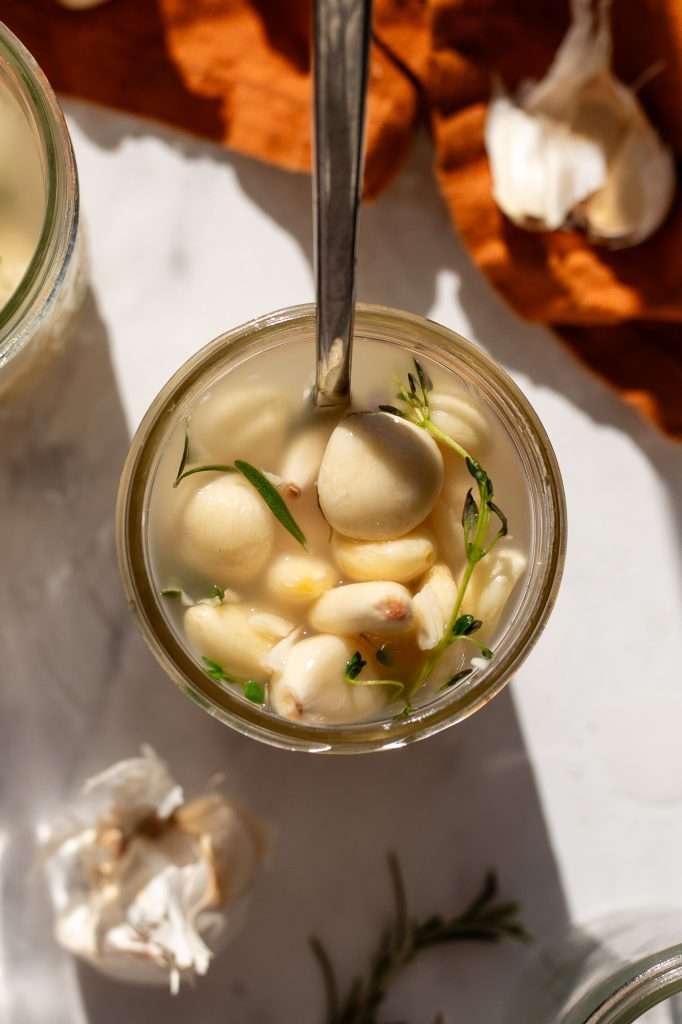
Things You May Need:
Print
My Easy Probiotic Pickled Garlic Recipe (only 3 ingredients)
Try this probiotic pickled garlic recipe, made with homemade sauerkraut brine and apple cider vinegar—a natural remedy, gut health booster, and a flavorful addition to any dish!
- Prep: 15 minutes
- Total Time: 72 hours 15 minutes
Ingredients
- Garlic cloves, peeled
- Sauerkraut brine*
- Apple cider vinegar
Instructions
- How much of each ingredient you use will depend on how big a batch you make! The limiting factor is sauerkraut brine, so use that to determine your batch size. Since the brine is already acidified, and this is a refrigerator pickling process with beneficial microbes, it’s super safe and adjustable to various batch sizes.
- Fill your jar with peeled and rinsed garlic cloves. (optional) add in a few herbs.
- Pour sauerkraut brine over the garlic cloves until the jar is 3/4 full.
- Top off the jar with apple cider vinegar.
- Place a lid on the jar and shake the jar to mix.
- Place the jar in the fridge for 72 hours before using the garlic. (I like to let it culture in the fridge for a week before using! The flavor gets better with time!) The garlic will keep in the brine in the fridge for 6-12 months.
Notes
- Sauerkraut brine is the liquid from fully fermented sauerkraut. Homemade is best, but store-bought works fine.
- nutrition facts were calculated filling a 16 ounce jar.


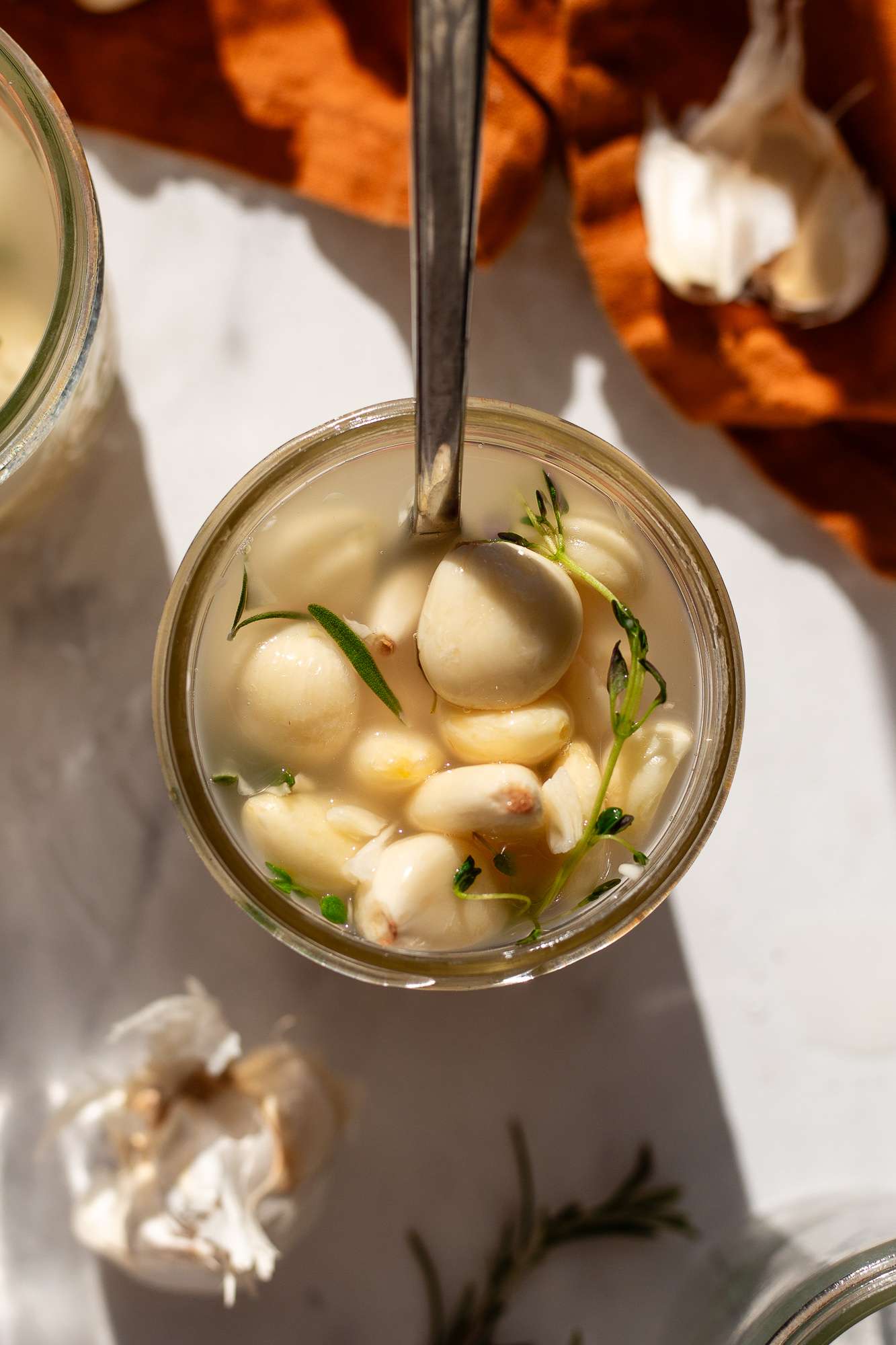
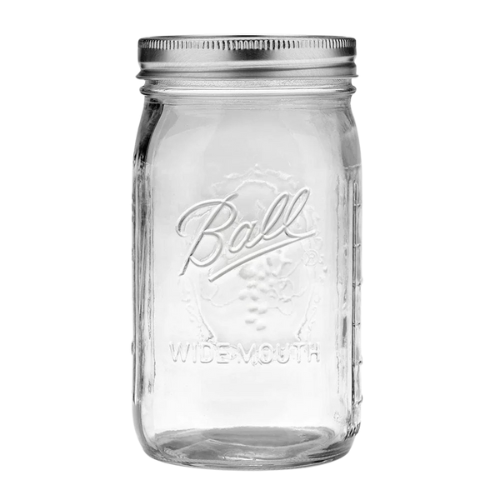
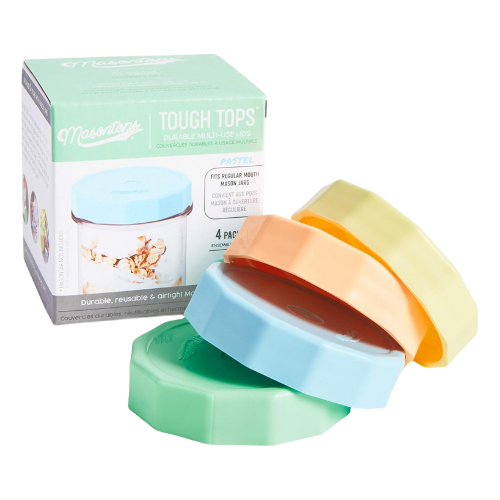
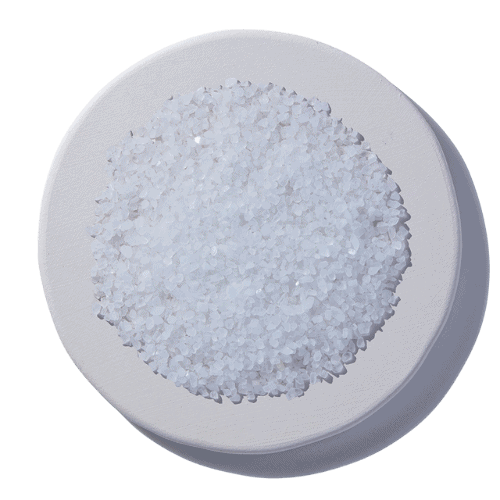
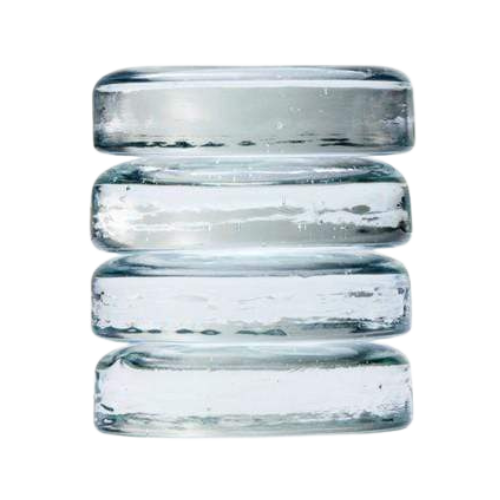


















Does the apple cider vinegar not harm or kill beneficial bacteria like Lactobacillus?
No. Raw vinegar contains lactic acid bacteria. They’re part of the vinegar fermentation process.
I don’t have sauerkraut on hand but I have fermented onions. Could I use the liquid from that instead?
yes that should work! As long as the onion brine is acidic (below 4 pH)
Thank you very much for the recipe
Hi Kaitlynn,
Thank you so much for this wonderful recipe:) I just tried it out and it’s ready to go in the fridge! Is it important to keep the garlic submerged with a fermentation weight or can I leave that aside here? Love your website.
You don’t need to keep it submerged in the fridge!